#Science fiction in East Asia
Text
Some thoughts on Silkpunk

It's Punk-O-Clock. And today I am going to talk about Silkpunk and... the rather complicated feelings I have about the genre.
Silkpunk is one of the new Punkgenre, the term being coined in 2015 by writer Ken Liu to describe his book series "Dandelion Dynasty" of which the first book released back then. It was originally just a cheeky way of his to describe his own writing, but he since has given a proper definition for the genre.
To quote two parts of the short description:
The vocabulary of the technology language relies on materials of historical importance to the people of East Asia and the Pacific islands: bamboo, shells, coral, paper, silk, feathers, sinew, etc. The grammar of the language puts more emphasis on biomimetics–the airships regulate their lift by analogy with the swim bladders of fish, and the submarines move like whales through the water.
And:
Finally, the “-punk” suffix in this case is functional. The silkpunk novels are about rebellion, resistance, re-appropriation and rejuvenation of tradition, and defiance of authority, key “punk” aesthetic pillars.
(Also: Yay, someone who thought about how to make the themes actually "punk".)
But he also makes one thing very clear:
No, it’s not “Asian-flavored steampunk.” No, it’s not “Asian-influenced fantasy.” No, it’s not …
Which kinda gets us to the core of what I want to talk about here. That Silkpunk, more than maybe most other of the punk genre gets misappropriated as a term. Because most people do use the term to say "Asian-flavored Steampunk". And to be perfectly honest: "Asian-flavored fantasy that has some steampunk aesthetics in there, and hey, look, a pagoda!"
Asia, more than maybe any other cultural circle (except maybe indigenous American cultures) sadly tends to be culturally appropriated in fantasy and science fiction a lot. Especially East Asia, doubly so Japan.
I mean, let's face it: the original punk genre - Cyberpunk - is full of appropriation of Japanese terms and aesthetics, due to all the techno orientalism.
And this makes Silkpunk so complicated. Because the genre so often gets just used as an excuse for that. Some cultural appropriation, because folks really want to give their fantasy a bit of anime flavor.
Thankfully most lists online so far have been somewhat currated in this regard to not include just self-proclaimed Silkpunk but think of this philosophical framing. Which is also why I take a big issue that half the lists of media I saw on the genre features Avatar - The Last Airbender and Legend of Korra. While with ATLA you can at least argue that there is some themes of rebellion and re-appropriation of traditions... Korra does not even do that. (Look, folks, I love Korra for the characters, but the politics of that series as messy as fuck and almost the opposite of punk.) And the design in both series also does not feature any of the described Silkpunk aesthetics, being rather more traditionally Steampunk and Dieselpunk.
I don't know... I really, really love Ken Liu as a writer and his books are amazing. But outside of his books... I have found a list of other Asian American writers whose books might be considered Silkpunk and definitely will look into it. But so far... Most of the stuff I saw under "Silkpunk" did strike me particularly as what Ken Liu describes.

30 notes
·
View notes
Text
Free MIT online courses that sound interesting
Arts & Literature
Introduction to World Music
Reading Fiction
Literary Interpretation: Virginia Woolf's Shakespeare
Introduction to Photography
Foundations of Western Culture II: Renaissance to Modernity
Studies in Poetry - Briths Poetry and the Sciences of the Mind
Studies in Literary History: Modernism: From Nietzsche to Fellini
Screen Women: Body Narratives in Popular American Film
Studies in Poetry: "What's the Use of Beauty"
Queer Cinema and Visual Culture
Monteverdi to Mozart: 1600 - 1800
Writing and Experience: Reading and Writing Autobiography
Advanced Topics in Hispanic Literature and Film: The Films of Luis Buñel
Major Authors: Rewriting Genesis: "Paradise Lost" and Twentieth-Century Fantasy
Arthurian Literature and Celtic Colonization
Contemporary Literature: Britsh Novel Now
Studies in Poetry: 20th Century Irish Poetry: The Shadow of W. B. Yeats
Writing About Literature: Writing About Love
Introduction to European and Latin American Fiction: Great Books On The Page and On The Screen
Popular Culture and Narrative: Use and Abuse of the Fairy Tale
Victorian Literature and Culture
Reading Poetry
English Renaissance Drama: Theatre and Society in the Age of Shakespeare
Introduction to Fiction
International Woman's Voice
Major Authors: Oscar Wilde and the "90's"
Prizewinners: Nobelistas
American Authors: American Women Authors
Shakespeare, Film and Media
Japanese Literature and Cinema
Woman's Novels: A Weekly Book Club
Classics of Chinese Literature
Major English Novels
Topics in South Asia Literature and Culture
Introduction to Literary Theory
History & Social Studies
American Classics
The Middle East in the 20th Century
Africa and the Politics of Knowledge
The Rise of Modern Science
European Imperialism in the 19th and 20th Century
Philosophy of Love
Human Rights: At Home and Abroad
The Nature of Creativity
Introduction to Comparative Politics
Riots, Rebellions, Revolutions
Introduction to the History of Technology
Ancient Philosophy
Youth Political Participation
#studyblr#study resources#dark academia#light academia#chaotic academia#romantic academia#adhd academia#studyblr brazil#literature#art academia#mit#free courses#study#collegeblr#studyblr college
1K notes
·
View notes
Text
Didn't wanna clog up your post, and these sources are more about relationships of time with space/place, but here's some stuff that I've encountered:
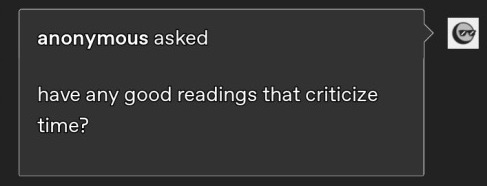
---
“Temporal sovereignty”. Contemporary US/Australian claims over time-keeping. Reclaiming agency by operating on Indigenous/alternative time schedules. The importance of the “time revolution” in the Victorian era to Euro-American understandings of geology and deep past, precipitating nineteenth-century conquest of time. Mid-twentieth century understanding of “deep time” and its co-option by the Australian state. "Deep time dreaming".
Laura Rademaker. “60,000 Years is not forever: ‘time revolutions’ and Indigenous pasts.” Postcolonial Studies. September 2021.
---
How "time is a form of enclosure". Checkpoints, "baroque processes to apply for permits to travel", fences, incapacity to change residences, and other "debilitating infrastructures" work to "turn able bodies into a range of disabled bodies" by "stretching time". This is a "slow death" and a simultaneous "slowing down of life" because "it takes so long to get anywhere" and "movement is suffocated". Thus "time itself is held hostage". This "suspended state" of anxiety and endless wait-times "wreaks multigenerational psychological and physical havoc". "Checkpoints ensure one is never sure of reaching work on time. Fear of not getting to work then adds to the labor of getting to work [...]. Bodies in line at checkpoints [...] [experience] the fractalizing of the emotive, cognitive, physiological capacities" through a "constant state of uncertainty". "The cordoning of time through space contributes to an overall 'lack of jurisdiction over the functions of one's own senses' [...] endemic to the operation of colonial rule". This "extraction of time" produces a "depleted" and tired person "beholden to the logistics" of administrative apparatuses, community suffers and "communing is thrawted".
Jabir K. Puar. "Spatial debilities: Slow Life and Carceral Capitalism [...]." South Atlantic Quarterly 120. April 2021.
---
The "apocalyptic temporality" that presumes extinction. Indigenous Polynesian/Pacific perceptions and ways of being "destabilize the colonial present" and also "transfigure the past" by "contesting linear and teleological Western time". Indigenous "ontologies of cyclical temporality or inhabitation of heterogenous time". How United States and Europe colonized Oceania for weapons testing and conquest of tropical Edens while rendering local Indigenous people "ungrievable" and "without future". "Pacific time is a layering of oral and somatic memory". Instead of accepting an apocalyptic future or doomsday or nightmare, assert the possibility of a livable future, in spite of "Western temporal closures".
Rebecca Oh. “Making Time: Pacific Futures in Kiribati’s Migration with Dignity, Kathy Jetnil-Kijiner’s Iep Jaltok, and Keri Hume’s Stonefish.” MFS Modern Fiction Studies. Winter 2020.
---
Colonial "space-time homogenization". The experience of "homogenous, empty time". Orientalist "time lag" and the naturalization of a supposed East-West hemispheric divide. Late Victorian imperial conceptions of temporality. The British establishment of the Greenwich meridian and International Date Line. The influence of British imperial seafaring and cartography on the establishment of time and on European/US feelings towards the Pacific Ocean. How the origin of English science fiction literature, space travel aspirations, and time travel narratives coincided with the Yellow Peril and xenophobia targeting East Asia.
Timothy J. Yamamura. "Fictions of Science, American Orientalism, and the Alien/Asian of Percival Lowell". Dis-Orienting Planets: Racial Representation of Asia in Science Fiction. 2017.
---
Imprisonment as time-control. Here “the question of the past the present and the future indeed time itself looms” especially around the prisoner. “The law renders punishment in units of time”, taking away a the right to a future. There are alternative worlds, many of them, which have been practiced and brought into being, which colonization tried to obscure. There is “a whole anthropology of people without future embedded in the assumptions that justify mass imprisonment as poverty management”. "The prison’s logic exterminates time as we know it”. In prison, bodies have been alienated from time and history ... the punishment seems endless ... to “achieve a measure of agency and possibility it is necessary to redeem time”, to refuse the doom, fated to a life of abandonment.
Avery Gordon. “Some Thoughts on Haunting and Futurity.” borderlands. 2011.
---
Bursting the Limits of Time: The Reconstruction of Geohistory in the Age of Revolution (Martin J.S. Rudwick, 2010) explores how the advent of European sciences like geology, preceding the "time revolution" when Europeans experienced revelations about the scale of "deep time", happened alongside and after the Haitian Revolution and other abolitionist movements. French, German, and British naturalists translated the explosion of "new" scientific knowledge from the colonies, so that the metropolitan European audience became a market for historical and scientific "narratives" about how "nature" and time functioned.
---
Prartik Chakrabarti's writing on time, temporality, and "the deep past" as British imperial concepts built in conversation with colonial encounters with South Asia. (British Empire reaching such heights in the middle of the nineteenth century at the same time that the newly professionalized sciences of geology were providing revelations about the previously unknown vast scale of "deep time". New colonial anthropology/ethnology also presumed to connect this "primitive" past with "primitive" people.)
See Chakrabarti's "Gondwana and the Politics of Deep Past". Past & Present. 2019.
---
We must witness and consider "multiple space-times" to understand how "unfree labour" of plantations was "foundational" to contemporary work, movement, subjugation, health, etc. We must "trace the geneaology of contemporary sovereign institutions of terror, discipline and segregation" [workplaces, imperial/colonial nations, factories, mines, etc.] back in time to plantations. How "the [plantation] estate hierarchy survives in post-plantation" times and places, with the plantation "being a major blueprint of socialization into [contemporary] work". The plantation was "a laboratory for [...] migration regulation in subsequent epochs" that practiced methods of racializing and criminalizing.
Irene Peano, Marta Macedo, and Colette Le Petitcorps. "Introduction: Viewing Plantations at the Intersection of Political Ecologies and Multiple Space-Times". Global Plantations in the Modern World: Sovereignties, Ecologies, Afterlives. 2023.
---
“Slow life” and the relationship between “settler colonialism, carceral capitalism, and the modulation of ... registers of time,” including “historical time, the stealing of time through the expansion of labor time, ... and the cordoning off of space through time”. For example, as in occupied zones or at border checkpoints, “the cordoning off of space through time” includes physical architecture like fences and customs, obstacles that impede movement and rhythm, so that “nothing ever happens on time” and there is “a stretching of time”. All the wasted time spent in line, showing papers, waiting for confirmation, etc. “is not a by-product of surveillance, it is the point of surveillance”. Such that “uncertainty becomes a primary affective orientation ... flesh as felt” with a racializing effect“. "This is a biopolitics conditioned through pure capacitation and its metrics”:
Jasbir Puar. In: “Mass Debilitation and Algorithmic Governance” by Ezekiel Dixon-Roman and Jasbir Puar. e-flux Journal Issue #123. December 2021.
---
"Starfish time". Indigenous Australian/Aboriginal perceptions of time and "attending to more-than-human agencies of time". Acknowledging the timescales of entire ecosystems, as part of multispecies relationships, a "transcorporeal collaboration". Cyclical time vs linear time. Contrasting timescales experienced by insects that only live a few days and creatures that live for decades. "Starfish may seem to be still" but they slowly move; "larval time" and "the time it takes for eggs to develop and hatch"'. The "immensity of the alterity is literally incomprehensible"; "we can't know what these beings know" but we "should seek respect and be aware of how our lives are entangled".
Bawaka Country including, S. Wright, S. Suchet-Pearson, K. Lloyd, L. Burarrwanga, R. Ganambarr, M. Ganambarr-Stubbs, B. Ganambarr, D. Maymuru. “Gathering of the Clouds: Attending to Indigenous understandings of time and climate through songspirals.” Geoforum. January 2020.
---
The use of calendars, dates, clocks, and industrial/corporate temporality as fundamental to the rise of plantations and financialization in United States/Europe, with a case study of the modern Colombian/Latin American state. Observance of certain dates and strict adherence to specific calendars support "mythologized deeds and heroic retellings" of colonization and industrialization. “The evolution and internalization of disciplined concepts of time” were intimately tied to the rise of wage labor in industrializing England and later during the global ascendancy of work and industrialized plantation monoculture, but the persistence of alternative time should “serve as a reminder that futures and the demarcation of epochs are never as simple as a neatly organized calendar”.
Timothy Lorek. “Keeping Time with Colombian Plantation Calendars.” Edge Effects. April 2020.
---
Indigenous people of Alaska and the US control over time management. For the past 50 years, Yupiak people have been subject to US government’s “investment in a certain way of being in time” which “standardized the clock” and disrupted human relationships with salmon. This US management model “anonymized care” and made “a way of attending to the life and death of others that strips life of the social and ecological bonds that imbue it” with resilience and meaning, which “ignores not only the temporality of Yupiaq peoples relations with fish, but also the human relations that human-fish relations make possible”. This disregards “the continuity of salmon lives but also the duration of Yupiat lifeworlds ... life is doubly negated” ... “futures depend on an orientation to salmon in the present”.
William Voinot-Baron. “Inescapable Temporalities: Chinook Salmon and the Non-Sovereignty of Co-Management in Southwest Alaska.” July 2019.
---
"Idling" and "being idle" as a form of reclaiming agency and life. Case studies of fugitive Blackness in Caribbean plantation societies. “Disruptive waiting”. “The maroon’s relationship to time challenges [both] the totalizing time of the modern state, but also the [...] narratives to negotiate struggle in the [...] present" in "antagonistic relationship with colonial power". Defying the “European narrative of modernity”. Refusing to be productive.
Amanda Lagji. “Marooned time: disruptive waiting and idleness in Carpentier and Coetzee.” Safundi: The Journal of South African and American Studies. March 2018.
---
Indigenous futures. "It is important to remember that some futures never went anywhere" and "yet they survive. These are futures suppressed and cancelled by colonial power." These are "parallel futures". "Colonial power must control the past so as to deny the emergence of" an alternative future; "colonial power creates a future in advance so that no others will take its place". Poor, racialized, Black, Indigenous people manifest alternative futures.
Pedro Neves Marques. "Parallel Futures: One or Many Dystopias?" e-flux. April 2019.
---
The "legacy of slavery and the labor of the unfree shape and are part of the environment we inhabit". The "idea of the plantation is migratory" and it lives on "as the persistent blueprint of our contemporary spatial troubles", so we must seek out "secretive histories" that no longer "rehearse lifelessness".
Katherine McKittrick. “Plantation Futures.” Small Axe. 2013.
---
“The temporal dispossession” of Congolese people. There is an “impossibility” of “predictable time” because temporal dispossession “disrupts the possibility of building a future”. Livelihoods/income is driven by market and price fluctuations in United States and Europe tech industries, so “there is an inescapable day-to-day sense of uncertainty”. As Mbembe says, “in Africa, the spread of terror ... blows apart temporal frames”.
James H. Smith. ‘Tantalus in the Digital Age: Coltan ore, temporal dispossession, and “movement” in the Eastern Democratic Republic of the Congo.’ American Ethnologist Volume 38 Issue 1. February 2011.
---
“Slow death”. Chronic illness not just as a byproduct of colonialism/dispossession, but also as part of its aim, a weapon that debilitates people, who become exhausted. Dooming poor and racialized people to lives “without future” through debility, “a condition of being worn out”. Relationship of illness, lack of healthcare, and debt as functionally incapacitating, a form of death sentence. A “zone of temporality” unfolding unlike abrupt/sudden traumatic events and becoming an inescapable condition.
Jasbir K. Puar. The Right to Maim: Debility, Capacity, Disability. 2017.
---
The extension of poverty, landlessness, homeless, and imprisonment. "To be unable to transcend the horror of such a world order is what hell means", and "without a glimpse of an elsewhere or otherwise, we are living in hell". The utopian is not only or merely a “fantasy of” and for “the future collectivity” but can be claimed and built and lived here, now. There is "no guarantee" of “coming millenniums or historically inevitable socialisms”, no guarantee that “the time is right” one day if we wait just long enough. Instead: "can a past that the present has not yet caught up with be summoned to haunt the present as an alternative?" The "utopian margins", an alternate world crossing time and place, an "imaginative space and temporality to trace the remains of what "was almost or not quite, of the future yet to come", living as if it were the present. Colonialism tried to crush the many headed hydra of the revolutionary Atlantic, those who challenged the making of the modern world system.
Avery F. Gordon. As interviewed by Brenna Bhandar and Rafeef Ziadah. “Revolutionary Feminisms: Avery F. Gordon.” As transcribed and published online in the Blog section of Verso Books. 2 September 2020. And: Avery Gordon. “Some thoughts on the Utopian.” 2016.
---
The US/European "city is the site of regulatory regimes" that try to impose a definitive narrative about history, progress, and possible futures. But it cannot achieve "a wholly Apollonian, seamlessly regulated realm" because the land "continues to be haunted by the neglected, the disposed of, the repressed". The "commodification" of landscapes "circulates an imaginary geography" mediated through advertisements, labels, soap operas, television, etc. which celebrate "sanctioned narratives and institutionalized rhetoric". A "wild zone" of informal spaces, debris. "Ruins are places where the things, people, and "other memories can be articulated". There is "a spectral residue" that "haunts dominant ways of seeing and being". "Alternative stories might be assembled", so that we can respect the people banished to abandonment, the periphery, and reclaim agency.
Tim Edensor. “The ghosts of industrial ruins: ordering and disordering memory in excessive space.” Environment and Planning D: Society and Space volume 23. 2005.
Also, how "master narratives of history as progress decompose" when faced with "a continuously remembered past" when "the ghosts of this past rear up in the ruin" to expose "the debris of unprecedented material destruction" of colonialism/empire-building. These "hauntings rupture linear temporality" and recall those people beaten down as "the trash of history". It is "essential to see the things and the people [...] banished to the periphery [...]."
Tim Edensor. "Haunting in the ruins: matter and immateriality". Space and Culture Issue 11. 2002.
---
"Many kinds of time" of bacteria, fungi, algae, humans, and "Western colonialism meet on the gravestones". Some creatures, like lichen, are very long-lived and "these temporal feats alert us that modernity is not the only kind of time, and that our metronomic synchrony is not the only time that matters". The "long duree evolutionary rapprochements to the quick boom and bust of investment capital" where "minor forms of space and time merge with great ones". Extinction is "a breakdown of coordinations with reverberating effects". Ghosts remind us that we live in an impossible present, a time of rupture. "Deep histories tumble in unruly graves that are bulldozed into gardens of Progress". "Endings come with the death of a leaf, the death of a city, the death of a friendship".
Elaine Gan, Anna Tsing, Heather Swanson, and Nils Burbandt. “Introduction: Haunted Landscapes of the Anthropocene.” Arts of Living on a Damaged Planet: Ghosts and Monsters of the Anthropocene. 2017.
---
Everywhen: Australia and the Language of Deep History. (Edited by Ann McGrath, Laura Rademaker, and Jakelin Troy. 2023.)
Chapters include: "Bugarrigarra Nyurdany, Because of the Dreaming: A Discussion of Time and Place in Yawuru Cosmology" (Sarah Yu et al.); "Songs and the Deep Present" (Linda Barwick); "Yirriyengburnama-langwa mamawura-langwa: Talking about Time in Anindilyakwa (James Bednall); "Across 'Koori Time' and Space (John Maynard)
#im sorry i guess i accidentally deleted this post so here it is again#colonial#imperial#temporality#abolition#indigenous#multispecies#ecology#temporal#futures#haunted#halloween i guess idk#ecologies#tidalectics#archipelagic thinking#caribbean#victorian and edwardian popular culture
298 notes
·
View notes
Text
New Research Article: From Star Trek to The Hunger Games: Emblem gestures in science fiction and their uptake in popular culture
In this new article I get to bring together three of my favourite things: gesture, science fiction and working with the best collaborators. I teamed up with genre author and creative writing expert Dr Peta Freestone and corpus whiz Jess Kruk to look at the different ways scifi gestures also have lives in the real world.
We used emoji evidence to look at the ways use of the Vulcan Salute (🖖) on Twitter references Star Trek, as well as nerd culture in general. There’s no emoji for the Three Finger Salute from the Hunger Games (...yet?), so we used a newspaper corpus to see what we could learn about this gesture. It has become a gesture of protest by younger people against a variety of regimes across South and South East Asia, and is becoming untethered from its narrative origins. For this gesture, newspapers provided a good, nuanced understanding of the meaning and function of this gesture.
This article partially started out of a blog post where I was pondering fictional gestures in scifi and fantasy. The article is part of a special issue of Linguistic Vanguard on the linguistics of scifi, with a special focus on corpus methods, which was edited bySofia Rüdiger and Claudia Lange. It’s fun that this article stands alongside lots of great articles including work on the sociolinguistics of Firefly, the lexical influence of Star Wars and changing gender dynamics on Star Trek.
Abstract
Research on emblems to date has not drawn on corpus methods that use public data. In this paper, we use corpus methods to explore the use of original fictional gestures in the real world. We look at two examples from popular science fiction, the Vulcan salute from Star Trek and the three-finger salute from The Hunger Games. Firstly, a Twitter corpus of the Vulcan salute emoji shows that it is used to represent Star Trek fandom and wider nerd culture, alongside its use as a greeting. Secondly, a global news corpus shows the three-finger salute has come to be used as a pro-democracy protest gesture across political and cultural boundaries in South East Asia. These corpus studies show different trajectories for the two gestures, with the three-finger salute escaping the confines of its fictional world, while the Vulcan salute has come to stand in as a reference to the media it originated from. We conclude with a reflection on the opportunities, challenges and limitations of bringing corpus methods to gesture studies.
Reference
Freestone, P., J. Kruk & L. Gawne. 2023. From Star Trek to The Hunger Games: emblem gestures in science fiction and their uptake in popular culture. Linguistic Vanguard. doi: 10.1515/lingvan-2023-0006
See also
Fictional gestures in scifi and fantasy
How I made the Aramteskan language for P.M. Freestone’s Shadowscent
Gesture emoji: contributing to the Unicode standard
#linguistics#gesture#emblems#gestures#scifi#fantasy#sff#hunger games#star trek#vulcan salute#three finger salute
81 notes
·
View notes
Text

Psychological warfare and propaganda have been used extensively in warfare since the earliest times. This book explores the functions, limitations, types, and history of psychological warfare through 1953. It was written by Paul Myron Anthony Linebarger, a US Army officer, a noted East Asia scholar, and an expert in psychological warfare, also known by the pseudonym Cordwainer Smith as a science fiction author. Linebarger had extensive experience with the practice and implementation of psychological warfare techniques in the field through his work with the Office of War Information.
Psychological Warfare By Paul M. A. Linebarger : VRILwave : Free Download, Borrow, and Streaming : Internet Archive
audio book
Psychological Warfare : Paul M. A. Linebarger : Free Download, Borrow, and Streaming : Internet Archive
18 notes
·
View notes
Text

a terra incognita introduction
cast: jake ✗ fem.reader
synopsis: as the world entered the middle of the 21st century, many things have changed for the better or for worse in the newly united korea peninsula: the preparation for the succession of the new conglomerates of the past decade, the uprising of deviant androids, and the new layer of life shield by walls of codes. in the middle of it, two beings are trying to understand each other and the situation of the world they live in; an unknown territory
genre: cyberpunk, cyber noir, psychological thriller, science fiction, dystopian future, politics and philosophies regarding artificial intelligence and humanity, romance, drama, angst, mature content (war and revolution, explicit smut)
based on: video game cyberpunk 2077 (2020) and detroit: become human (2018), anime serial experiments lain (1998), and tv show succession (2018-2023)
masterlist

united korea
the united republic of korea (known as "united korea") is an east asia nation on the korean peninsula. as a result of the reunification agreement back in 2025 of the former north and south korea, the state has now prospered in terms of sociopolitical and economic issues from the korean war. it now excels technologically as one of the firsts in the world to introduce commercialized androids along with other east asian countries such as japan and china. in the aftermath of the social media collapse and the cyber world war of 2027-2030, the private conglomerates of the state have released a new way to connect to the information superhighway.
FLAG
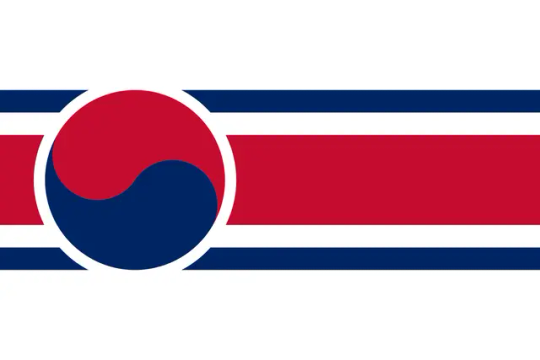
(flag link to r/alternatehistory on reddit)
INFORMATION
capital cities: neo seoul | neo pyongyang
population: 65.5 million
language: korean | english | japanese | chinese
>> HISTORY
>> GEOGRAPHY
>> GOVERNMENT
>> SOCIETY
>> ECONOMY
>> MILITARY
>> MAJOR CITIES
neo seoul
one of the capital cities of united korea and the former capital of south korea, neo seoul is a metropolis for the state's bustling life from the most traditional to the most modern. neo seoul is known for six districts that are divided by the han river flowing in the middle, known as the division of north seoul and south seoul
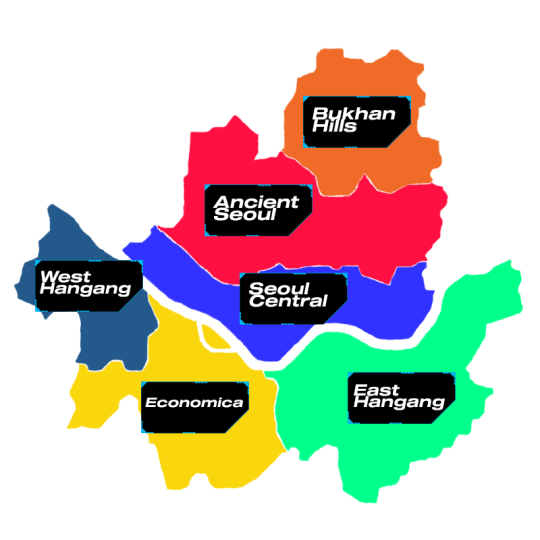
north seoul encapsulates the traditional side of neo seoul and the center for the city's and state's government administration
south seoul lies the center of neo seoul's economy where conglomerates build their headquarters. a distinct living cost gap can be seen to compare those living in the north and those in the south where it is connected to incheon, a major city of transportation with its international seaports and airport
neo pyongyang
one of the capital cities of united korea and the former capital of north korea, neo pyongyang is the capital of the parliament of united korea. it's located on the taedong river kilometers upstream from the yellow sea. it is known as the city where the declaration of unification was signed along with its establishment as half of the capitals of the unified countries. much of the population of neo pyongyang are citizens coming from the southern of the peninsula as they migrate to fill in the spaces and utilize materials. it is also a growing industrial hub where conglomerates built their factories, along with kaesong.
with the rise of deviancies from androids made by shim laboratories, journalists have made observations and assume that neo pyongyang is the main hub of the rebellion between androids and their creator (as one human equates to two androids), creating unrest between the two parties. yet, they also say that neo pyongyang is a better refuge for deviant androids than neo seoul.

taglist: @raeyunshm @endzii23 @fluffyywoo @camipendragon @hiqhkey @wccycc @cha0thicpisces @y4wnjunz @yeehawnana @beansworldsstuff @kimipxl @blurryriki @reallysmolrenjun @frukkoneeeeg
© writingmochi on tumblr, 2021-2024. all rights reserved
#enhypen imagines#enhypen smut#enhypen x reader#enhypen scenarios#enhypen angst#enhypen fanfiction#jake x reader#rsc: t.i.#cr: jake#cs: enhypen#sc: regina
36 notes
·
View notes
Text
Doraemon Movie Review: Nobita's Sky Utopia (2023)
What is Doraemon? The title character of the Doraemon manga and anime is a blue robotic cat from the 22nd Century who keeps an array of high-tech gadgets in a portable pocket dimension on his belly, and has traveled from the future to improve the fortunes of a hapless schoolboy named Nobita. Although relatively obscure in the English-speaking world, Doraemon is a Mickey-Mouse-level cultural icon in East Asia (and some other regions, too). The Doraemon franchise was a big part of my childhood, and there are still elements of it that I enjoy now.
Doraemon has released theatrical films almost annually since 1980, most of which involve Nobita and his friends (kind Shizuka, brash Gian, and crafty Suneo) getting swept into adventures thanks to Doraemon's gadgets. Despite being of potentially broad appeal to fans of science fiction and animated films, there are very few English reviews of the Doraemon movies, so I've embarked on a project to write about all the films, for as long as I continue watching them, at least.
For links to all of my Doraemon movie reviews, see here.

Movie premise: Nobita thinks life would be much better if he lived in a utopia, and asks Doraemon to help him find one.
My spoiler-free take: Although it could perhaps benefit from minor adjustments to the pacing and writing, this is an emotionally charged movie that is a solid addition to the Doraemon cinematic lineup.
POTENTIAL SPOILERS AFTER THIS POINT
Review: There are quite a few things I enjoyed about this film. The story is well crafted for most part, making effective use of foreshadowing. It's certainly one of the most emotionally driven Doraemon movies, with several heartfelt moments among the characters, especially between Nobita and Doraemon and between Doraemon and the "perfect" robot cat Sonya. Speaking of which, Doraemon being the main protagonist to forge a connection with one of the movie characters is a rare occurrence! Additionally, Sonya himself probably qualifies as one of the more memorable and developed movie-exclusive characters in the franchise.
If I were to criticize anything about this movie, one would be that it's very exposition heavy. I have to wonder whether some of the scenes dedicated to explaining background information and character backstories through dialogue could have been trimmed down just a bit, especially given that there were other elements of the story that could have used the extra runtime. For example, Shizuka, Gian, and Suneo don't get a whole lot of focus this time around.
I do appreciate though that the movie actually highlights one of Shizuka's flaws other than "she plays violin badly"—she can be stubborn, which is true... even if the way it is shown here makes her come across as studious more than anything. The scene where the protagonists come around to embracing their shortcomings is also a well done character moment.
That being said, there are ways in which the central theme of the story (essentially "it's okay not to be perfect") could have been handled with more nuance. After all, Gian and Suneo's misbehavior is regularly shown to cause real harm to others throughout the franchise. I know, there are limits to how deeply one can explore a moral conundrum in a children's film, but I don't believe this would have been too challenging to achieve. Perhaps more emphasis could have been placed on learning to control one's flaws and redirecting them into exacting positive change, contrasting with the villain's plan to forcibly erase all individuality. Glimmers of this are already present in the aforementioned scene, but I think it could have been made more explicit still, which isn't helped by the fact that the main villain only appears in person briefly and barely interacts with the heroes.
On the whole, however, these weaknesses didn't detract much from my viewing experience, and I'd consider this a worthwhile entry in the Doraemon film series.
Star rating: ★★★★☆
21 notes
·
View notes
Text

Hello everyone! A new month is approaching so I'm back with another list. This time, it's a collection of fairytale retellings! Hope you like it :)
As always, please remember to vote using the link at the end of the post. And now, onto the books...
Bryony and Roses, by T. Kingfisher
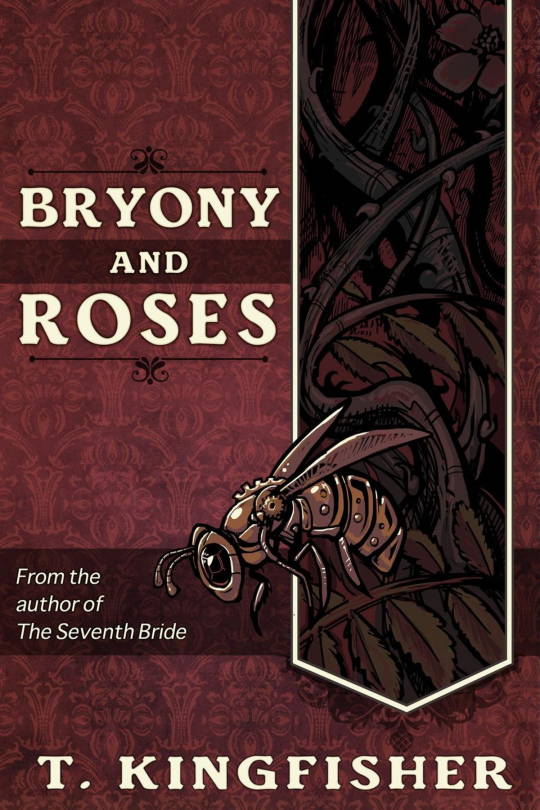
Bryony and her sisters have come down in the world. Their merchant father died trying to reclaim his fortune and left them to eke out a living in a village far from their home in the city.
But when Bryony is caught in a snowstorm and takes refuge in an abandoned manor, she stumbles into a house full of dark enchantments. Is the Beast that lives there her captor, or a fellow prisoner? Is the house her enemy or her ally? And why are roses blooming out of season in the courtyard?
Armed only with gardening shears and her wits, Bryony must untangle the secrets of the house before she—or the Beast—are swallowed by them.
Deerskin, by Robin McKinley

As Princess Lissla Lissar reaches womanhood, it is clear to all the kingdom that in her beauty she is the image of her dead mother, the queen. But this likeness forces her to flee from her father's lust and madness; and in the pain and horror of that flight she forgets who she is and what it is she flees from: forgets almost everything but the love and loyalty of her dog, Ash, who accompanies her. But a chance encounter on the road leads to a job in another king's kennels, where the prince finds himself falling in love with the new kennel maid . . . and one day he tells her of a princess named Lissla Lissar, who had a dog named Ash.
A Thousand Beginnings and Endings, Edited by Ellen Oh and Elsie Chapman
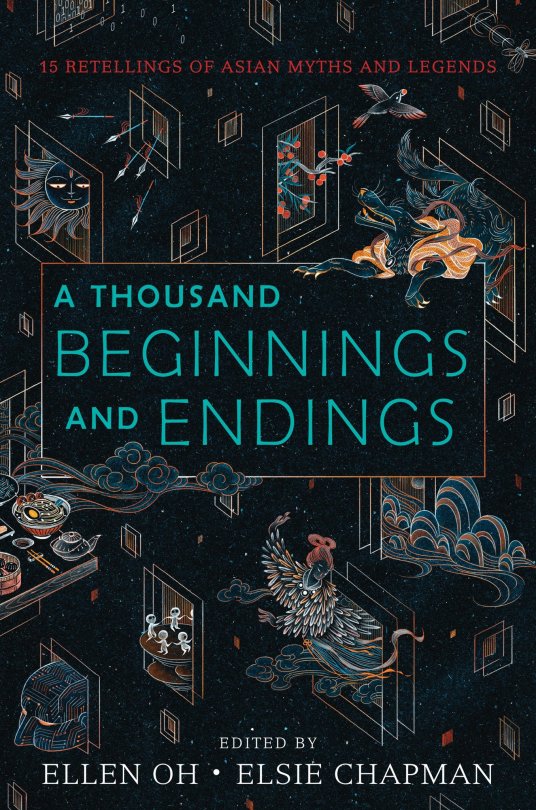
Sixteen extraordinary authors—including New York Times bestsellers Melissa de la Cruz, Renée Ahdieh, and Julie Kagawa—reimagine the folklore and mythology of East and South Asia in short stories that are by turns enchanting, heartbreaking, romantic, and passionate. This exquisite paperback anthology includes an original bonus story from Ellen Oh. In a starred review, Publishers Weekly called A Thousand Beginnings and Endings a “must-read.”
A mountain loses her heart. Two sisters transform into birds to escape captivity. A young man learns the true meaning of sacrifice. A young woman takes up her mother’s mantle and leads the dead to their final resting place.
Bestselling and award-winning authors explore the timeless themes of East and South Asian lore in sixteen original stories that will appeal to every reader. From fantasy to science fiction to contemporary, from romance to tales of revenge, these stories will beguile readers from start to finish.
All the Ever Afters: The Untold Story of Cinderella's Stepmother, by Danielle Teller
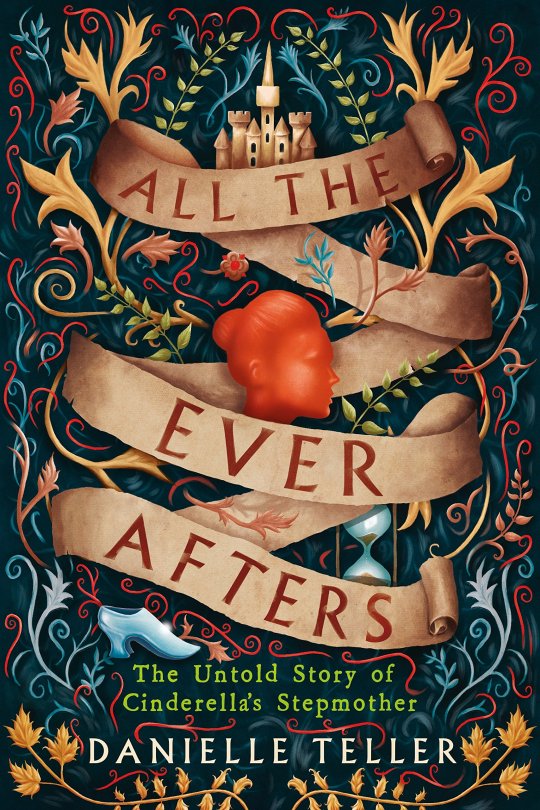
We all know the story of Cinderella. Or do we?
As rumors about the cruel upbringing of beautiful newlywed Princess Cinderella roil the kingdom, her stepmother, Agnes, a woman who knows all too well about hardship, privately records the true story. But what unfolds is not the princess's history. The tale Agnes recounts is her own.
A peasant born into serfdom, Agnes is separated from her family and forced into servitude as a laundress’s apprentice at Aviceford Manor when she is just ten years old. Alone, friendless, and burdened with a grueling workload, Agnes carves a place for herself in this cold place that is home to Sir Emont Vis-de-Loup, a melancholic and capricious drunkard.
Using her wits and ingenuity, Agnes eventually escapes and makes her way toward a hopeful future, serving as a housemaid for the powerful Abbess Elfilda. But life once again holds unexpected, sometimes heartbreaking twists that lead Agnes back to Aviceford Manor, where she becomes nursemaid to Ella, Emont's sensitive, otherworldly daughter. Though she cares for Ella, Agnes struggles to love this child, who in time becomes her stepdaughter and, ultimately, the celebrated princess who embodies all our unattainable fantasies.
Bitter Greens, by Kate Forsyth

The amazing power and truth of the Rapunzel fairy tale comes alive for the first time in this breathtaking tale of desire, black magic and the redemptive power of love
French novelist Charlotte-Rose de la Force has been banished from the court of Versailles by the Sun King, Louis XIV, after a series of scandalous love affairs. At the convent, she is comforted by an old nun, Sœur Seraphina, who tells her the tale of a young girl who, a hundred years earlier, is sold by her parents for a handful of bitter greens...
After Margherita's father steals parsley from the walled garden of the courtesan Selena Leonelli, he is threatened with having both hands cut off, unless he and his wife relinquish their precious little girl. Selena is the famous red-haired muse of the artist Tiziano, first painted by him in 1512 and still inspiring him at the time of his death. She is at the center of Renaissance life in Venice, a world of beauty and danger, seduction and betrayal, love and superstition.
Locked away in a tower, Margherita sings in the hope that someone will hear her. One day, a young man does.
Vote for our next book here.
32 notes
·
View notes
Text
@persepinesascent asked, "And there are other books?"
These are all of the books I have written that are currently available:
Governments Around the World
Discover the evolution of governments everywhere! This social studies book explores the past, present, and possible futures of governments around the world. Across the world, local, state, and national governments work to protect and serve their citizens. This teacher-approved book provides students with opportunities to understand the ins and outs of government, including how governments from different countries can work together. The book covers the structure and history of each type of government in an easy-to-follow way. With a glossary and index, essential discussion questions, and other engaging features, this book brings the intricacies of government to life for students.
The Middle East
Explore the beautiful land and ancient history of the Middle East! This social studies book describes the rich art, science, and culture of the land where Africa, Asia, and Europe meet. Known as a cradle of civilization, the Middle East is famous for its natural resources and fascinating past. This teacher-approved book offers students opportunities to understand life in the Middle East, including the history of indigenous peoples in the region. The book incorporates the geography, history, economics, and civics of the Middle East in an easy-to-follow way. With a glossary and index, key discussion questions, and other useful tools, this book brings the wonders of the Middle East to life for students.
The Southwest
Dive into the fascinating culture of the southwestern United States! This social studies book describes how the Southwest embraces its rich American Indian, Spanish, and Mexican heritages. From ancient pueblos to the Old West to today, the Southwest is a region steeped in history and culture. This teacher-approved book gives students the chance to explore the lives of people from the Southwest, including the diverse history of native peoples in the region. The book covers the geography, history, economics, and civics of the midwestern United States in an easy-to-follow way. With a glossary and index, key discussion questions, and other useful features, this book brings the beauty of the Southwest to life for students.
The Mississippi and Other U.S. Waterways
Explore the amazing life of one of the world’s busiest waterways! This social studies book tells the story of the Mississippi River and other important U.S. waterways. The Mississippi River has flowed for millions of years, and today it provides people with food, water, and transportation. This teacher-approved book offers students the chance to dive into the rich history of U.S. rivers, including the history of native peoples along riverbanks. The book covers the geography, history, economics, and civics of the Mississippi Valley in an easy-to-follow way. With a glossary and index, essential discussion questions, and other useful features, this book gives students a thoughtful inside look at major U.S. rivers and waterways.
Untold Stories
Untold Stories is a series that uses fascinating tales about real people and events to boost literacy skills, empower students, and promote representation. The Untold Stories series describes ordinary people doing extraordinary things, all while promoting representation and culturally responsive learning.
Rewrite the Stars
Suppressed memories from childhood. You have always known you were different. You are not alone. There are others like you. A healer. A prophet. A mystic. A martyr. God. The world is changing and you are changing with it. This is called evolution. Los Angeles-based Performance Artist, Das Energi (David Scott Coleman), brings his art to the page in this spiritual tour-de-force of stylistically postmodern storytelling. Across multiple narratives, Das Energi taps into the anxiety of our time to create a world of magical realism that won't seem like fiction. "David Scott is taking risks in this collection of poetry and prose, giving us characters and concepts, we haven't experienced before." —Steven Reigns, author of "Inheritance".
7 notes
·
View notes
Text

Gareth Edwards
Dynamic Sci-Fi Director Envisions an Artificial Intelligence-infused World Decades From Now in His Latest Film The Creator
by Brad Balfour
Employing actors with global reputations and locations all over the world, master sci-fi film director Gareth James Edwards has now put out The Creator. The film considers the effects of the Artificial Intelligence revolution in technology some 40 years from now. It stands the Terminator premise on its head and drives a whole re-think on the supposed “menace” of AI.
As if it’s a metaphor for the Vietnam war as much as anything else, future America and its allies are in a conflict between the human race and the forces of artificial intelligence which have taken root in many Southeast and Far-East Asian countries. While AI-enhanced androids have merged with the general human population there, the USA has prohibited them and is committed to destroying Asia and its robotic allies.
Entering the mix is Joshua (John David Washington), a hardened ex-special forces agent grieving the disappearance of his wife Maya (Gemma Chan), one of the leaders of the Asian-AI community and resistance. After having been undercover among the AI community — where he met and wed Maya, Joshua had reluctantly been removed from the area. He had then been recruited to return and hunt down the Creator, the elusive advanced AI designer/programmer who has developed a mysterious weapon with the power to end the war and destroy Nomad, the American super weapon — a computer-enhanced airborne battleship. Ironically, it depends on sophisticated computer technology to fight its anti-AI war. Joshua and his team of elite operatives venture into enemy territory, invading the heart of AI-occupied territory to find and destroy Nirmata — an AI in the form of a young child.
Born on June 1, 1975, in Nuneaton, Warwickshire, the young Edwards admired movies such as the original 1977 classic Star Wars and went on to pursue a film career. The Welshman even cites George Lucas and Steven Spielberg as his biggest influences. He got his start in special visual effects, working on shows that aired on networks such as PBS, BBC and the Discovery Channel. In 2008, he entered the Sci-Fi-London 48-hour film challenge, where a movie had to be created from start-to-finish in just two days (which he won). Then he wrote and directed Monsters, his first full-length feature, which was shot in only three weeks. Edwards personally created the film’s special effects by using off-the-shelf equipment. Aside from its two main actors (real-life couple Scoot McNairy and Whitney Able), the crew consisted of just five people. The $500,000 thriller received a riotous reception and was released to great success.
The impact of Monsters resulted in Edwards becoming an alt-sci-fi movie-making star. With offers from major studios, Warner Bros. tapped him to direct an English-language reboot of the 1954 Japanese classic Gojira. His Godzilla re-visioning garnered mixed reviews but did tremendous box office. Following its success, producer Kathleen Kennedy had Edwards helm Rogue One: A Star Wars Story — a Star Wars spin-off — for Lucasfilm Limited. The film boasted a cast including Felicity Jones, Donnie Yen, Mads Mikkelsen and James Earl Jones among others.
Such an ensemble anchors this film as well. And while its story (co-written by Chris Weitz) doesn’t offer much of an innovative leap in a sci-fi narrative, it does have a spectacular view of an AI-infused future. The following Q&A is drawn from an appearance Gareth Edwards made shortly before the film’s release this week.
This is your fourth feature — and your fourth science fiction production as well. What is it about this genre that you just keep coming back to it?
Are there other genres…? I heard about this, films without robots in them and stuff. I think the best science fiction is a blend of genres. With my first film, I saw it as a love story meets science fiction. My second film, Godzilla, was like a disaster movie meets science fiction. Star Wars is probably a war movie meets science fiction.
That’s a really good point because science fiction is at its best when it holds a mirror up to us. That definitely happens here. How did this come about? When and where did the inspiration hit you for The Creator?
It was 7:32 p.m. on a Tuesday. There were numerous things that happened. I guess the most obvious one was after we had just finished Rogue One. My girlfriend — her family lives in Iowa — and I drove across America to go visit. As we were driving through the Midwest, there’s all sorts of farmlands with tall grass. I was just looking out the window. I had my headphones on and wasn’t trying to think of an idea for a film, but I was getting a little bit inspired. I just saw this factory in the middle of the tall grass. I remember it having a Japanese logo on it and I was thinking, “I wonder what they are making there?” Then I just started thinking — because that’s the way I am — my tendencies, it was like, “Probably robots, right?” Then I was thinking, “Okay, imagine you were a robot built in a factory. Then for the first time, you step outside into the field and look around and see the sky. I wonder what that would be like.” It felt like a really good moment in a movie, but I didn’t know what that movie was, and I threw it away. Suddenly he tapped me on the shoulder and went, “Oh, it could be this,” and these ideas started coming. By the time we pulled up to the house, I had the whole movie mapped out in my head, which never happens normally. I was like, “That’s a good sign. Maybe this might be my next thing.”
It’s an original concept that you’re working with, how did you get New Regency on board as a producer?
I need to shout out to New Regency as you probably noticed in cinema recently, there’s very few original films being made. That’s because everyone’s gotten very gun shy with the franchises and IPs getting regurgitated a bit. Hats off to Yuri and Michael from New Regency for having the balls to take a big swing and do something like this. Some of my closest friends are concept artists and that’s probably because I know I need them to make my next film, so I asked all my friends… “Could you do some artwork for this idea I’ve got, I’ll pay you” and I started building up a library of imagery. Basically, I had about 50 images when I went into it. I kept it very secret because I didn’t want to put any pressure on it. I just went to New Regency and laid out all the artwork and talked them through the idea beat by beat — which I hate doing. I hate being a car salesman. I just wanted to hit play on the movie. That’s my favorite thing to do. Trying to sell it and speak with a microphone, it’s not my fun thing. You look at all that imagery and it was incredibly ambitious. The natural reaction was, “This is a $300 million film. We’d love to do it, but we can’t really do it.” I was like, “We’re going to do it very differently. We’ll film it with this very small crew and essentially reverse engineer the whole movie.” In theory, what you normally do is have all this design work and you have to build sets in a studio against a green screen — and it’ll cost a fortune. We were like, “We will shoot the movie in real locations in real parts of the world that look closest to what these images are. Then afterwards, when the film’s fully edited, we’ll get the production designer, James Klein, and other concept artists to paint over those frames and put the sci-fi on top.” Everyone was like, “It sounds great.” But basically, we had to really prove it to them.
How many locations did you shoot?
On some of the other films I’ve done, I’m so lucky when I get away from the studio and go to a proper location a handful of times. On this one, we went to like 80 locations. We didn’t really use any green screen. There was occasionally a little bit here and there, but very little. If you do the math, and keep the crew small enough, the theory was that the cost of building a set — which is typically 200 grand apparently — you can fly everyone anywhere in the world for that kind of money. It was like, “Let’s keep the crew small and let’s go to these amazing locations.” We went to Nepal, the Himalayas, to active volcanoes in Indonesia, temples in Cambodia, Thailand, Vietnam, and Tokyo for mega city stuff. Then we did a bit in Pinewood [Studios in London] using their stage and screen — everyone knows it from “The Mandalorian” — but the kind of special non green screen led screen environment.
Your antagonist in this feature is artificial intelligence — AI — but could your timing be any better?
The trick with AI is to get time in that sweet spot window where it’s before the Robo-apocalypse and not after — which I think is in November or maybe December. I think we got really lucky. The joke would be that when you write a film, especially a science fiction film, you avoid putting a date on it. I didn’t want to write a date for the movie because even Kubrick got it wrong. I was like, “Don’t write a date and then at some point, you have to. I did some math and picked 2070. Now I feel like an idiot because I should have gone for 2023. Everything that’s unfolded in the last few months or year is kind of scarily weird, especially when we’re showing it now. When we first pitched the movie to the studio, this idea of war with AI, everyone wanted to know the back story. Well, hang on. Why would we be at war with AI? It’s like, they’ve been banned because it kind of went wrong. But why would you ban AI? “It’s going to be great and blah, blah, blah.” It was all these sorts of ideas that you have to set up, that maybe humanity would reject this thing and not be cool about it. The way it’s played out, like the setup of our movie, is pretty much as it’s been for the last few months.
Set it up for us as the first scene begins?
To understand what’s going on, I would say, essentially, something terrible happened in America and AI got banned — it’s completely banned in the West. But in Asia, there was no such problem, so the world is divided in two camps. They carried on developing it until it was nearly human-like. So there’s this war going on over there — to wipe out AI [in Asia]. The person everybody’s after is called Nirmata — Public enemy #1 — which is basically a Nepalese word for the creator. From the Western perspective, this is the Osama bin Laden of our story. But from the Asian and AI perspective, this is like God.

When it came to prep and research, consulting with scientists and technological advisors, were you able to really dive into that?
That’s all I did for years. It was a bit like researching jet packs because I started writing this, I guess it was like in 2018, and it did feel back then like this was 30 years away. But when we were filming, we were in the middle of the jungle and driving to places when I got a text on my phone. There was that whole whistleblower account from one of the big tech companies thinking that AI had become self-aware. It really wasn’t on my radar back then in terms of being a reality, it was just something that [raised the question of] whether it’s a good or bad thing. In one way, humanity might get wiped out, but on the other hand, I get to make my dream film. So everyone wins.
What were some of the tools, some of the new innovations, when it came to cutting-edge technology, that you were able to take advantage of that didn’t exist when Rogue One came out in 2016?
Camera and film making technology has come a long way in the last few years. I needed the actors and me to have total freedom on set. Something we did on this film that was really important was that I wanted it to feel as realistic as possible. We would always be able to shoot in 360 degrees but the problem working against you when you try to do that in a film is [that] you have lights like we have here. The second you want to move the camera, you suddenly see the lights and you spend 20 minutes moving them. It takes forever to shoot a scene. The way we worked there was with really sensitive camera equipment in terms of how we could use the lights. They’re very lightweight. We’re all familiar with how lights have become. We thought we could set it up — you have a boom operator holding a pole with the microphone on. Why can’t you have a person holding a pole with a light on it? We had a best-boy type running around holding the light by hand. If the actor suddenly got up and did something — went over here and suddenly there was a better shot — I could move and suddenly the lighting could really be readjusted. What would normally take like 10 minutes to change was taking four seconds. We would do 25-minute takes where we’d play out the scene three or four times. It just gave everything, this atmosphere, this sort of naturalism and realism that I really wanted to get where it wasn’t so prescribed. Like you’re not putting marks on the ground and saying stand there. It wasn’t that kind of movie.
What about the casting process, particularly with leads John David Washington, Gemma Chan and Ken Watanabe?
With John David, we were casting the film during the pandemic. It was really hard to meet anybody but fortunately he lived in LA, and I just heard through his agent that he’d meet me any time I wanted to go for a meal. So I went to meet him, and he walked in — it’s the pandemic. He’s got his mask on, a Star Wars mask, like with the Star Wars logo on it. I initially thought, “He’s doing this because of “Rogue One.” He sat down and admitted that he’s a massive Star Wars fan and he’s like, “I’ve been wearing this mask every single day for like a year or whatever. It’s been for the whole pandemic. I thought about not wearing it to this meeting, but then it felt false, so I thought it’d be like a good ice breaker.” We hit it off straight away. I’d worked with Ken [Watanabe] before — he’s the only actor I’ve worked with twice. I don’t know if that says something about me. I always want to do something new and so for the longest time, I didn’t think about Ken for this role. The second he turned up on set, I felt like such an idiot, obviously it was supposed to be Ken from the beginning. Every time we held the camera up and Ken’s in the shot, it felt like this strange hybrid — it’s meeting Star Wars or something, which was exactly what we were going for. He gave us goosebumps. There’s something about that guy. He’s just got this face that, I think, is the reason he’s so successful internationally; it’s not really about what he says.
He can convey so much with just his looks; he’s so good. How did you find the right Alphie? What was that casting process?
We basically did an open casting call around the world and I think we got hundreds of videos. Thankfully, I didn’t have to watch all of them. They sent me like the top 70 or something and then we met. I went to meet, I forget, about ten kids. The first one was Madeleine who plays Alfie. She came in and did this scene. We were all nearly in tears at the end. I thought to myself “This is weird and phenomenal. Maybe the mum was just brilliant at prepping her to get really upset just before she came in. There was some little trick going on. So we chatted a bit and we did some other scenes and then right at the end — I was a bit cruel — I was like, “Could we just try one more thing?” I just wanted to see if it was repeatable. “Can we do another scene?” I explained a different scene and we just improvised it and she was even more heartbreaking. I don’t know what we would have done if we hadn’t found the right kid. We got really lucky. I’m glad I live in the universe where that happened because the movie lives or dies [with her]. I hate movies about little kids because they can be so annoying and that was my biggest fear — are we going to do one of these really annoying kid movies? It was the biggest relief because she’s beyond her years. She was really something.

How was it working with John David Washington and vice versa?
She’s quite “method.” I can tell she does “method” a lot because we only knew each other during the filmmaking process. But it’s like she kept everybody at arm’s reach. I was allowed in a little bit. But she and John David were inseparable. He became a brother or father figure. I’m not sure which. What’s amazing is that I thought I was going to have to trigger it. So when we deal with sex and all the scenes, I need this to be like a documentary so we can pull this performance out of this, this girl without kind of like her having to act and she could act her pants off, you know what I mean? She was amazing at it. it was a director’s dream; you could just tell her what Alfie was thinking and this amazing performance came out. I’d look at the other actors and[think] be why can’t you be like this — what’s your problem?
Talk about filming those combat scenes and how did they differ from the ones in Rogue One?
Obviously, we went to the Maldives and that wasn’t bad. We went to shoot real exterior locations. Everything in this movie is the closest thing we could do to be what the artwork suggested it should be. I glimpsed it a little bit when we were in Thailand. We needed to find a really technologically advanced factory. We looked everywhere. There were car manufacturing plants that were nervous about us filming but eventually we found a particle accelerator and it’s one of the most advanced, probably in the whole of Thailand. We were like, “Please, please, please, could you let us film.” It looked amazing. It had that whole circular thing going on. We went to visit, and they were like, “There’s no way you’re going to be allowed to film here.” They asked what do you want to do? Why are there people with guns shooting and explosions? This is like a multi-multimillion dollar facility with all these leading cutting-edge scientists. Then, at the very last minute, someone was like, “What filmmaker is doing this?” They were like, “It’s this guy from the States or whatever. He lives over there, but he’s English. And they go, “What films has he done?” They went, “He did this Star Wars film called “Rogue One.” And then, they were like, “Can we be in it?” We were like, “Sure, whatever. Everybody was in those scenes, with everyone running around. They’re nuclear physicists — they really are — and they were amazing.
You did a lot of location work. Isn’t that right?
We went into real locations. We wanted it to feel like we were making a student film to some extent. But it got to the point where like that beach scene where Gemma’s running and there’s all that crossfire. It was the beginning of when the pandemic restrictions were lifted, and Thailand was opening up to tourists. They’re like, “You can film on this beach, but you can’t close it. so it’s like, “How are we going to do that scene where there’s tourists there. I don’t know what happens normally in Thailand at night on these beaches. But with the stuff that’s in the movie and the trailer, we didn’t close the beach. If you look carefully in the background, you can see cars and tourists, but one person came over and went, “What are you doing?” It was just the four of us with a camera running around so it didn’t look like this big, massive movie. The goal hopefully was that it all ends up on the screen. We tried to be very efficient about it.
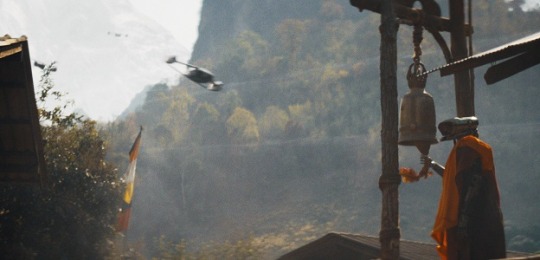
So further along in the film, what do we see?
Further on the journey, we have Joshua and now Alfie. The best way to say it is that Joshua infiltrated the AI village with the insurgents and guerrillas. Basically they’ve abducted the child. As this is happening, it seems that the Americans have also arrived. Essentially these rockets ascend into the air, and they smoke out the whole village and then it all unfolds from there.
What would you list as your cinematic influences for The Creator? What movies should we see as companion pieces?
Since my first film, I put up posters in the edit suite of movies that had inspired the film I was doing. There are some really obvious ones you’d probably predict. But there’s a film called Baraka. The cinematographer from that film went on and directed another film called Samsara, which is one of the greatest movies ever made. Lone Wolf and Cub is a Japanese manga series. There’s a whole bunch of films called Sword of Vengeance. The really obvious ones are Apocalypse Now and Blade Runner. In terms of this film’s dynamic, maybe there’s a little bit of Rain Man [in it]. It’s a journey of someone normal and someone who’s a little bit special. And there’s Paper Moon, with its dynamics.
What was your inspiration behind the robot designs? And talk about working with your costume designer for the entire film.
A lot of the costumes were done by the WETA Workshop in New Zealand. Peter Jackson and ILM [Industrial Light and Magic] did all the visual effects — or a lot of them — plus some by the vendors around the world. We tried to summarize the design and aesthetic of the movie as a bit retro futuristic. Imagine if Apple Mac hadn’t won the tech war and Sony Walkman had. everything has this sort of ’90s/ ‘80s kind of Walkman/Nintendo thing. We looked at all the product designs from that era and riffed off little pieces and tried to put them into the robots. The tricky thing with designing robot heads was to pull from sources. We did a whole pass at one point where we took insect heads and then tried to make it as if that insect had been made by Sony — like the praying mantis — and changed it into product design. Then we took products and tried to turn them into organic looking heads. We took things like film projectors, vacuum cleaners — things like that — and then just messed around. I just kept experimenting; it was like evolution in real life, like DNA getting merged and trying to create something better than the previous thing.
Being a big science fiction director, who are some of the directors and writers that you looked up to and get inspiration from?
There are the obvious people — Steven Spielberg, James Cameron, Ridley Scott. It’s the high benchmark of essentially what we were trying to do. I’m not saying we got anywhere close to achieving it, but the goal of the movie was to try and go back to that style and type of film that we grew up loving, like the film was shot on 1970s anamorphic lenses and things like this. Actually, I hate writing. It’s like doing homework. The worst thing in the world is having to write a screenplay. The only way I can bring myself to do it is to lock myself in somewhere nice. I’m not allowed to leave until I’ve finished. I’ll stay there for like a month or something. I went to Thailand, to the exact place where the beach ended. I didn’t realize I was getting inspired for the movie. I just picked this nice resort, and it was like a recurring theme like in the Maldives and now this beach resort in town. Whilst I was there, a filmmaker friend who was in Vietnam said, “Come over and we’ll just do a little trip.” I went there and you can’t just go around that country and not think of all the imagery from films like Apocalypse Now. Now I can, but I was writing this science fiction film. So everything I was looking at in my mind was like robots, spaceships and things. You’d see Buddhist monks going to temples and I’d picture a robot Buddhist monk. I just spent the whole time going, “Oh my God, what is this movie?” This feels like there was something so appealing about it, this mix of Blade Runner meets Apocalypse Now.
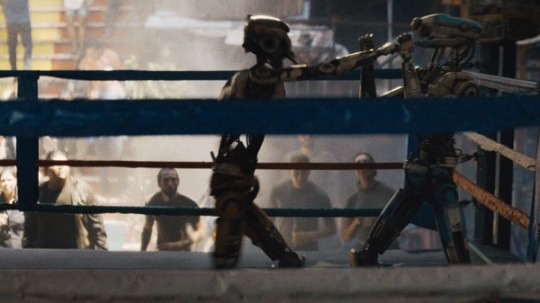
What was the biggest challenge filming this?
I wouldn’t say it was a particular thing; it was more just the duration of it. We started filming in January 2022 and we finished in June. We were there for six months and it was like nonstop 40-degree heat, people were dying every day. it was a dream looking back at it, to get to do that. But there was a point where you wanted to collapse and you felt like, “He’s only done seven days of filming and there’s still all that is still left. The first cut of this movie was five hours long and we had so much great, cool material but everything that’s in this film is all the best stuff. The editing process was basically like a game of Jenga where we would pull things out and see if we missed it or it fell apart. We had it packed by the end through the editors, but we finally got it down to two hours. It’s like the old adage “less is more” most of the time.
What are the highest and best values of humanity that you hope this movie ultimately illustrates?
I hope some sort of empathy for others [is there]. That’s a strong value which is very important. When this film began, I obviously didn’t know AI was going to do what it ended up doing this last year. AI was really in the fairy tale of this story. We want to get rid of people who are different from us. All kinds of fascinating things start to happen while you write that script. You start to think, “Are they real? How would you know and what if you didn’t like what they were doing? Can you turn them off? What if they didn’t want to be turned off?” This sort of stuff started to play out which became as strong as the premise and that’s what I’m most proud of.
Two words for you: Hans Zimmer.
Everyone’s iPhone tells you the last 25 most played tracks or something like that. I looked at [mine] out of curiosity and I think 14 were Hans Zimmer tracks. I was like, “I don’t know how we get composer Han Zimmer, but we have to try.” Joe Walker, editor of Rogue One, assembled the film. He had worked with Hans a lot and was like, “I’ll talk to him.” We ended up in this strange situation where I had to call Hans whilst in the middle of nowhere; we were going to meet the head of the military in Thailand to get permission to film the Black Hawks for one of those sequences. It was this massive deal meeting that took months and months to organize. It happened to be the same moment that Hans was available to do a Zoom. We had to pull off the road. It was like a hotel in the middle of nowhere and they had Wi-Fi. I go in there and get Hans and the worst thing in the world is that they said you’ve got to leave in 30 minutes. You can’t stay because the whole military is waiting for us over here. I was looking at this clock and Hans started telling his anecdotes about The Dark Knight and Terrence Malick. All my life I’ve wanted to talk to him about these films and I have to go,” I’m really sorry, Hans, I have to leave now.” It was so against every bone in my body to come away from that.
Talk about working with Oscar-winning cinematographer Greig Fraser.
I obviously worked with Greig on Rogue One. Greig had to make this work as well. We were totally on the same page and Greig’s very rebellious. and despite how it might look because he’s, you know, doing his big movies. But we’re both during that, like the build up to this film, I got to go around one of these virtual reality studios where they had this poster on the wall as to how you make a movie. it was every part of the process, and I was just looking at it going, “What a strange thing to have. Why are they doing it? Why have they got this poster?” The guy who ran the thing came up to me and went, “Oh, I see you looking at the poster — that’s 100 years old.” When I looked at it, I realized the typography was like 100 years old. We haven’t changed how films are made in 100 years. We still do it the same way. With all these new digital tools and technology, there are other ways to make films. People like Greig and I really want to do things differently because that’s how you make a different type of movie. The process is as important as the screenplay to some extent.
Let’s talk about the opportunity and power of science fiction to drive social commentary and reflection.
I like science fiction because there’s a chance to sneak ideas under the radar. My favorite TV show growing up was The Twilight Zone which was in the ’50s and ’60s. Rod Serling, who wrote a lot of those shows, had said the reason he did science fiction was because he could get out from under the radar of the censors and say things you’re not normally allowed to say out loud. If you start to type and work out a film, and you go, “I want to make a film about this. It’s got to have this social commentary to it”— it will be a rubbish film. If you get attracted to an idea, there’s something primal about it that pulls you in. There’s something that needs to be said about this subject matter but about halfway through making or writing a film is when you start to realize what that thing is. It’s like a child who tells you what they want to be when they grow up. You learn what it is and then you try to help it along. Science fiction does it the best because we all go through our lives with certain beliefs, and they never really get tested. You do everything you’re supposed to do but science fiction says, what if the world had this different thing about it. Would your little idea still work, and you hit against the wall? The thing you used to think was true starts to be false. And you begin to question things. I love that kind of storytelling. I hope our film does a little bit of that.
[For fans of this film or any genre film, go to Big Apple Comic Con‘s Christmas Con, taking place in the New Yorker Hotel this December 16th, 2023, www.BigAppleCC.com. There are many opportunities to steep yourself in sci-fi and other graphic story collectibles. Get posters and other collateral available from The Creator and many others as your stocking stuffers.]
Copyright ©2023 PopEntertainment.com. All rights reserved. Posted: September 28, 2023.
Photos © 2023. Courtesy of 20th Century Studios. All rights reserved.
youtube
8 notes
·
View notes
Text
Asian Representation in Cyberpunk 2077
For a long while, I have this idea floating about writing what Cyberpunk 2077 did about Asian representation. This long overdue but similarly complex topic that was an unintended follow up to my previous post about my argument against Orientalism in Cyberpunk 2077. In that post, I tried to write as concisely as I can but I realized that I did not articulate further using the game itself which leads to some persistent confusion and casual assumptions about the game.
As a disclaimer, I am not defending orientalism or even war crimes while discussing about Cyberpunk 2077. I am not endorsing only negative portrayals of Asian people nor defending the problematic western stereotypes of Asians in the media history.
We could have a civilized discussion over this entire matter because lucky for all of you, I am fluent enough in English that I could use my own voice for this.
Every words that I wrote in this series; about the topics I explored, about myself, my lived experiences, my history, my opinions and my criticism are all solely my own. I think I am uniquely qualified to talk about many aspects of this topic but I like to think I am not immune to criticism and neither was the Cyberpunk 2077 game itself. What I generally hope was my writings would help, inform, educate and hopefully clarify some of the contentious takes directed towards me, CD Projekt RED, R. Talsorian Games and the video game; Cyberpunk 2077.
There was simply no perfect Asian representation that could encompass all of the wealth of diversity. We couldn't perfectly portray everything either in academia, in media, in writing, non-fiction or even fictional works either by Asians or non-Asians. Asia is the largest continent on earth. Asian people are richly diverse, complex and sometimes described to many people across various ethnicities and nationalities. All we could in representation works was to attempt, to explore, to criticize and to create more and better works as an honor to ourselves and to our people. We all have our own stories to share and our interpretations.
There was so many things that I could write about Asians in Cyberpunk franchise but I intend to fully explore again that was more than just the controversial Arasaka family or the Tyger Claws. I want to talk about the Asian aesthetics of Night City and many Asian characters in the game and including Cyberpunk Edgerunners' Lucyna Kushinada and Cyberpunk 2077 : No Coincidence's Aya and because of the impending release of Phantom Liberty, I am looking forward to explore Song So-mi @ Songbird. (Especially with the OST release, I know that CDPR used traditional Korean performance Pansori as Songbird's musical leitmotif and I'm so excited to explore that once I played the expansion)
But for starters;
Not all Asians are East Asians
I wished I didn't have to write that down but I realized it was something that a lot of online discourses in English seemed to center itself either by non-Asians or East Asian diaspora in Western countries.
It was most apparent within these published articles : Orientalism, Cyberpunk 2077, and Yellow Peril in Science Fiction and How Cyberpunk 2077 Resurrects the 1980s’ “Japan Panic” which were very hyperfixated on Arasaka and the Tyger Claws. Another element that I noticed from these articles and by their writers, they both neglect the fact that not every diasporic Asian portrayed in Cyberpunk 20777 are East Asians.
Not every Asians are Japanese or Chinese or Korean.
I am not East Asian.
I am Southeast Asian.
My V was a Malay woman like me. Someone who was flawed, imperfect and maybe portrayed many sides that was very unbecoming to the image of a Malay Muslim woman.
I created this Tumblr blog mainly to share my own CorpoV. She was my own OC that I was simply obsessed with. Cyberpunk 2077 remained to be the only game that truly allowed me to craft a genuine Southeast Asian woman protagonist with her personal history that was almost relevant to me on personal level.

However, V could be anyone of any races or ethnicity. She could also be Japanese, Korean or Chinese because the game have localization with those languages. In the game, V can love sushi, drink tea, burn incense and work for a fictional Imperial Japanese company.
After all, Cyberpunk 2077 is a roleplaying game .
But did you know who else was also a Southeast Asian in Cyberpunk 2077?

Aha... think I don't notice the casual disrespect towards our glorious living legendary Pinoy rockerboy ever?
My next post will be all about Kerry Eurodyne.
We will discuss Kerry in the TTRPG, what he become in Cyberpunk 2077, his complicated history, his character analysis, his traditional Batok tattoos, his relationships to Johnny Silverhand, their band Samurai and other Filipino representation within Cyberpunk 2077 game.
However, I have to admit that my own exposure to my dear neighbouring Philippines was genuinely abysmal. I live in West Malaysia and unlike my Sabahan and Sarawakian friends, I am not exposed enough to the Phillipines. Personally, I won't claim I am an expertabout Filipino people, culture and heritage (and if you are from Phillipines, feel free to DM me, please) but I hope to do justice about our beloved rockerboy in the way he truly deserved.
Didn't just make music on that boat. Busted my ass servin' drinks, waitin' tables. Free time, I-I composed till my fingers bled.
- Kerry Eurodyne "Boat Song"
#Cyberpunk 2077#Cyberpunk 2077 Essay#Asian Representation#Video Games#Corpo V#Kerry Eurodyne#R. Talsorian Games#Cyberpunk#CD Projekt RED
16 notes
·
View notes
Text
January 2024 Diverse Reads
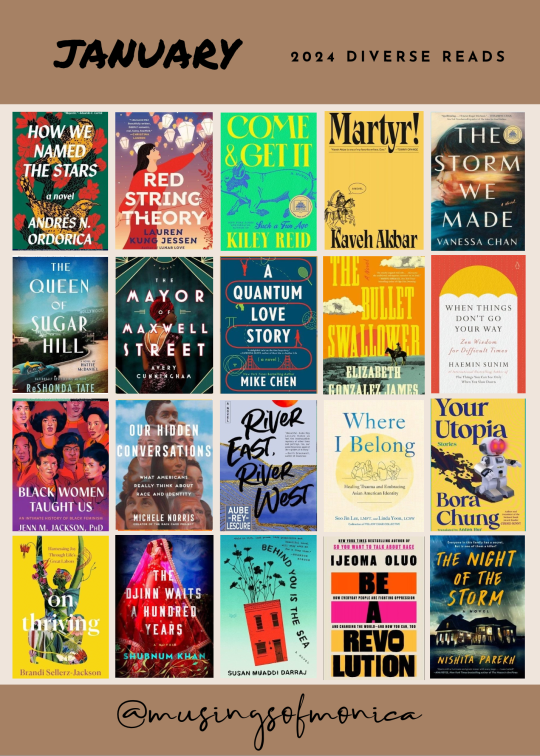
January 2024 Diverse Reads:
•”How We Named the Stars” by Andrés N. Ordorica, January 30, Tin House Books, Literary/LGBT/Hispanic & Latino/Coming of Age
•”Red String Theory” by Lauren Kung Jessen, January 09, Forever, Romance/Romantic Comedy/Asian American
•”Come and Get It” by Kiley Reid, January 30, G.P. Putnam's Sons, Literary/Coming of Age/Women
•”Martyr!” by Kaveh Akbar, January 23, Knopf Publishing Group, Literary/Family Life/LGBT
•”The Storm We Made” by Vanessa Chan, January 02, S&S/Marysue Rucci Books, Literary, World Literature/Asia/Historical /20th Century/Post-World War II/Women
•”The Mayor of Maxwell Street” by Avery Cunningham, January 30, Hyperion Avenue, Romance/Historical/African American/Women
•”The Queen of Sugar Hill: A Novel of Hattie McDaniel” by Reshonda Tate, January 30, William Morrow & Company, Biographical/Historical/African American/Women/Own Voices/World Literature/American/20th Century/Post-World War II
•”A Quantum Love Story” by Mike Chen, Mira Books, January 30, Romance/Time Travel/Science Fiction/Time Travel/Family Life/Siblings
•”The Bullet Swallower” by Elizabeth Gonzalez, January 23, Simon & Schuster, Literary/Hispanic & Latino/Magical Realism
•”When Things Don't Go Your Way: Zen Wisdom for Difficult Times” by Haemin Sunim & Charles La Shure (Translator), January 23, Penguin Life, Buddhist/Mindfulness & Meditation/Philosophy/Personal Growth/Buddhism
•”Black Women Taught Us: An Intimate History of Black Feminism” by Jenn M. Jackson, January 23, Random House, Women/American Government/Feminism & Feminist Theory/Women's Studies
•Our Hidden Conversations: What Americans Really Think about Race and Identity” by
Michele Norris, January 16, Simon & Schuster, Ethnic Studies/Discrimination & Race Relations/Social Classes & Economic Disparity/Cultural & Social
•”River East, River West” by Aube Rey Lescure, January 09, William Morrow & Company, Literary/Coming of Age/Family Life/Asian American/Cultural Heritage/World Literature-China/21st Century
•”Where I Belong: Healing Trauma and Embracing Asian American Identity” by Soo Jin Lee & Linda Yoon, January 09, Tarcherperigee, Ethnic Studies/ Asian American Studies/Mental Health/Personal Growth
•”Your Utopia: Stories” by Bora Chung & Anton Hur, January 30, Algonquin Books, Horror/Science Fiction/Short Stories/World Literature/Korea
•”On Thriving: Harnessing Joy Through Life's Great Labors” by Brandi Sellerz-Jackson, January 09, Ballantine Books, Personal Memoirs/Inspiration & Personal Growth
•”The Djinn Waits a Hundred Years” by Shubnum Khan, January 09, Viking, Historical/Gothic/Women
•”Behind You Is the Sea” by Susan Muaddi Darraj, January 16, Harpervia, Literary/Short Stories/Humor/Coming of Age/Women/Family Life/Cultural Heritage/Feminist/Muslim/Own Voices/World Literature/Middle East/Arabian Peninsula
•”Be a Revolution: How Everyday People Are Fighting Oppression and Changing the World--And How You Can, Ijeoma Oluo, January 30, HarperOne, Activism & Social Justice/Ethnic Studies/Personal Growth/Anthropology/Cultural & Social/Race & Ethnic Relations/Civil Rights/Social Activists/United States/21st Century/Human Rights/Motivational & Inspirational
.”The Night of the Storm” by Nishita Parekh, January 16, Dutton, Thriller/Mystery & Detective/Family Life/Asian American
#books#bookish#bookworm#bibliophile#book lover#reading#bookaddict#book#booklr#bookaholic#reading list#to read#reading resolutions#reading recommendations#bookblr#books and reading#reader#diverse books#diverse reads
2 notes
·
View notes
Text
The Myth-Making Marketing of Amina al-Sirafi
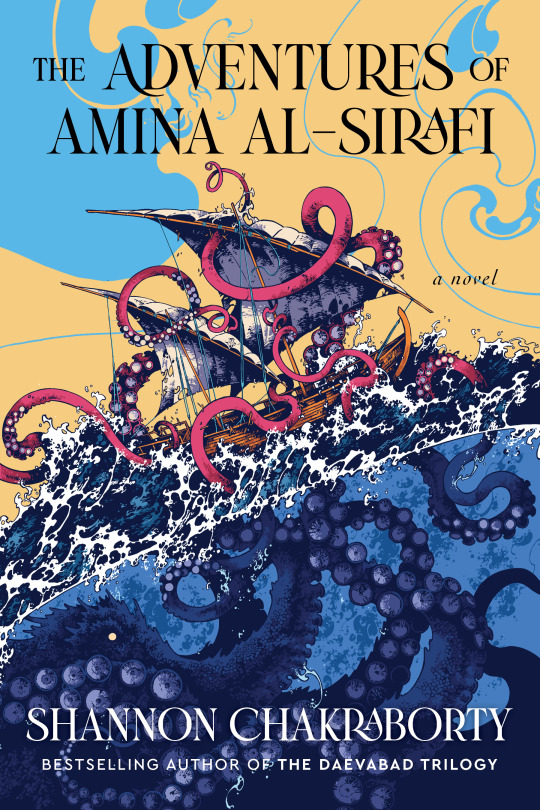
Shannon Chakraborty’s 2023 novel The Adventures of Amina al-Sirafi thrives off the tension between the focus on accuracy in historical narratives and the embellished storytelling of myth and legend. The plot of the novel features the notorious former-pirate and nakhudha (shipmaster) Amina al-Sirafi telling the story, in her own words (“even if they’re rude”), of how she was lured out of retirement for one final life-changing opportunity. The story itself takes place in and around the medieval Indian Ocean and directly discusses the interwoven cultures of the countries of northern Africa, the Middle East, and Asia. While most of the book is directly from Amina’s perspective, Chakraborty frames the narrative by including the character of a scribe named Jamal, who is writing down Amina’s accounts of the novel’s events. Jamal opens and closes the novel as well as including interludes throughout that provide collected folktales and historical documents that add context and weight to Amina’s adventure. This deliberate attention to the myth-making present alongside historical evidence is highlighted best by the end of Jamal’s introduction: “But for the sake of honesty, another truth will be confessed. Her adventures are not only being told as evidence of God’s marvels. They are being told to entertain.” Chakraborty, a self-described “lover of history,” is intentionally leaning into the historical conventions of the storytelling present in fantastical collections of tales like One Thousand and One Nights, and the marketing and design of the book emphasizes Amina and Jamal’s connection to this storytelling tradition.
After the success of her first series of books The Daevabad Trilogy, it’s clear that Harper Voyager (the fantasy and sci-fi imprint for HarperCollins) went all in on the marketing of The Adventures of Amina al-Sirafi, the first book in a potential new trilogy. Helped by Chakraborty’s active social media presence on Twitter and Instagram, the marketing campaign for the novel officially began in September 2022 (six months before the novel’s release) with a cover reveal posted on social media by Chakraborty, Harper Voyager, and Tor.com (a prominent online publisher of Fantasy and Science Fiction), though it’s worth noting that Chakraborty had been posting about her process of writing and publishing the novel for months prior (such as the “page passes” I’ve included below).
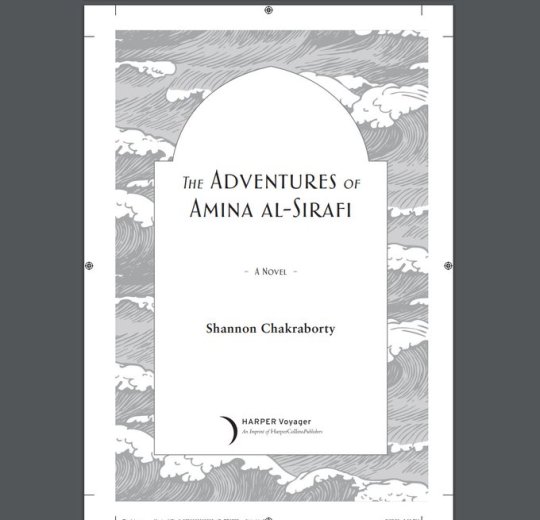
While the cover already evoked the kind of legendary pirate story readers might be looking for with its giant tentacled sea creature attacking a pirate ship, Chakraborty and Harper Voyager UK utilized the release of the UK cover, an allusion to the Islamic illuminated manuscripts of the medieval Middle East, to emphasize the historical fantasy narrative of the novel. October also began Harper Voyager and Harper Voyager UK’s giveaways to advertise the novel, including foil proofs with the illuminated UK cover.
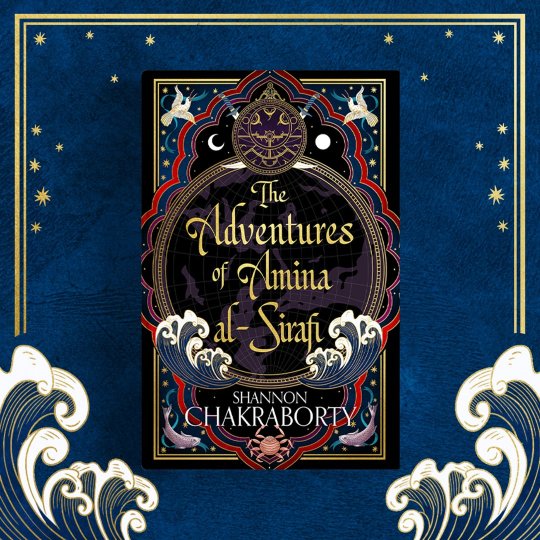
In January 2023, Chakraborty and Harper Voyager began to advertise pre-orders for the book, including some copies that came with dagger-shaped, wooden bookmarks somewhat resembling Amina’s khanjar, which she received from her pirate grandfather. This limited offer of bookmarks played into the aesthetics of the pirate fantasy of the book while also encouraging readers to pre-order for a chance to get a gift unique to the book that any reader could use.

In February, alongside an excerpt of the book, free to read on Tor.com, Chakraborty released the image of “The Map of the Great Indian Ocean” showing the setting of the novel, while also incorporating historical references as easter eggs in the illustration. And on February 28, a brief book trailer was shared on Chakraborty’s social media alongside the book’s release.

With the benefit of one successful trilogy under her belt and the marketing team at Harper Voyager, Chakraborty was able to create an aesthetic and narrative for her medieval pirate, historical fantasy novel months in advance of the book’s release. The marketing’s emphasis on visual posts and artifacts that readers could look at, win, and potentially buy provided a clear sense of anticipation for the story that inspired readers to learn more, discuss online, and pre-order the novel. Chakraborty had a clear intention with the structure and design of the storytelling, alluding to medieval Islamic folktales and pirate legends, and the marketing reflected and effectively built upon that intention with the design of its six-month social media plan.
12 notes
·
View notes
Text
Outside the Western Gaze: A Reading List on Womanhood in East Asia
Hi friends! Glad you could make it. So you want to read about womanhood and feminism in East Asia. Here are a couple recommendations to get started:
Kim Jiyoung, Born 1982 by Cho Nam-Joo, a contemporary analysis of womanhood, sexism, and parenthood in Korea, as well as the pressures of duty and obligation placed upon working women. It caused a fair share of controversy among some male readers in Korea. Interestingly, Kim Jiyoung is a combination of two very common names, almost like the equivalent of Jane Smith in English-speaking countries, and her story speaks to as shared thread among many Korean women.
Breasts and Eggs by Mieko Kawakami, a Japanese feminist novel about bodily autonomy, female objectification, and class. I really recommend any of Kawakami’s work, especially Heaven, as Kawakami is a brilliant writer with great social and philosophical insights on the position of women in society, and also famously interviewed Haruki Murakami about his often misogynistic portrayal of female characters in his novels.
I Want to Die But I Want to Eat Tteokbokki by Baek Sehee, a self-help memoir about mental health and psychiatry in Korea. This novel ruminates on self-objectification in the face of the male gaze, internalized competition and hatred among women, and the pursuit of perfection. Plus, it was recommended by RM of BTS, so if you’re a K-pop fan, this is a good place to start!
The Memory Police by Yoko Ogawa, a science fiction dystopian novel that asks the question: what do we forget? How do we let ourselves forget so fast? Under the historical backdrop of the Japanese denial of war crimes, particularly those committed against women, the novel asks how our forgetfulness, or remembrance, impacts how we act - or don’t act - in the present.
Notes of a Crocodile by Qiu Miaojin, an LGBTQ+ coming of age novel set in late 80s Taiwan, featuring college students as they come to terms with their sexualities and enter passionate relationships at a time when their sexual orientations are being debated in the political sphere.
#east asia#literature#japanese#korean#chinese#taiwanese#lit#books and libraries#bookish#books recommendations#book#bookworm#bookaddict#read#translated literature#reading recommendations#culture#book list#reading list#book quote
22 notes
·
View notes
Text
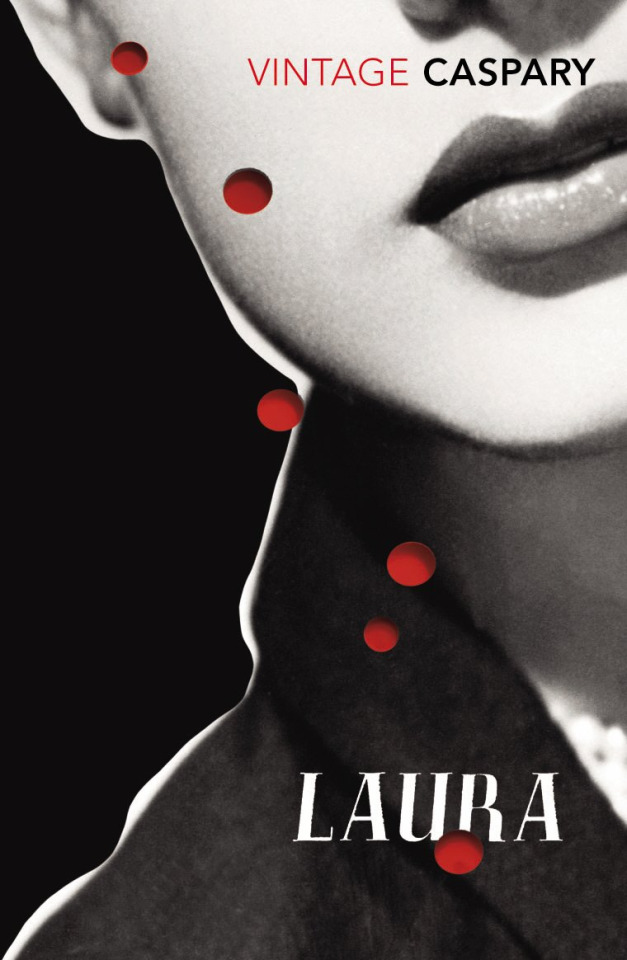
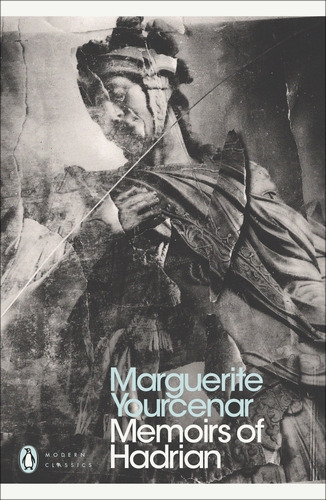
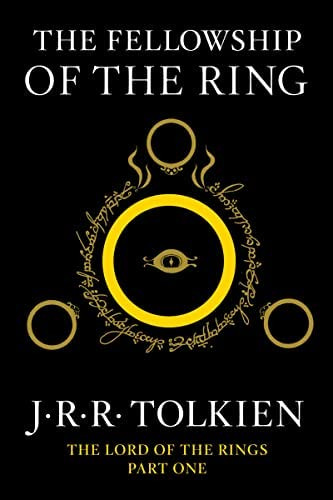

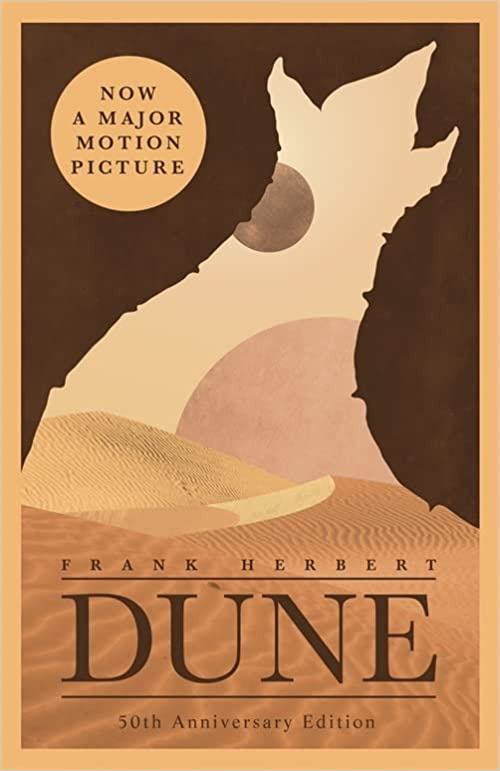
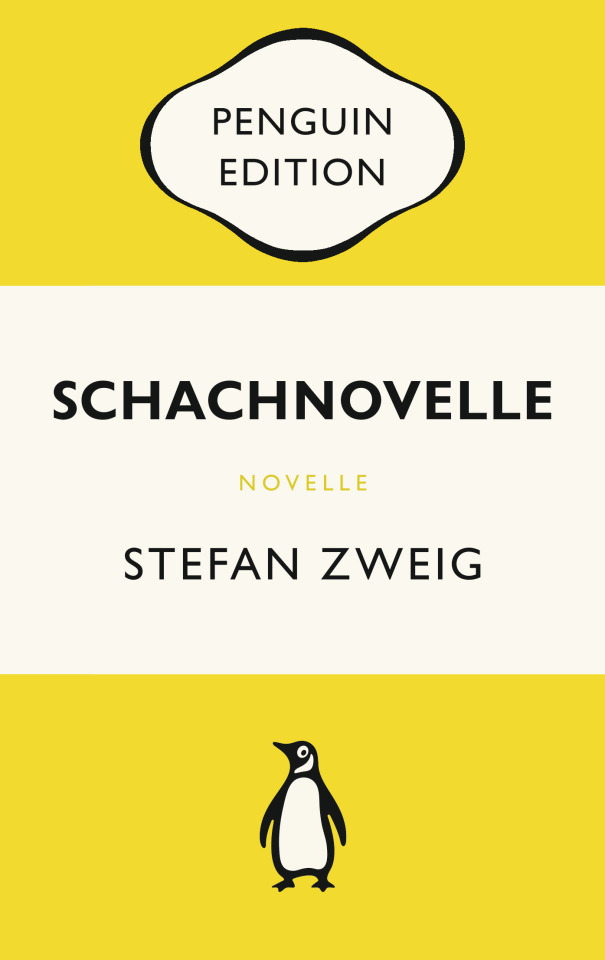
My favourite reads of 2022! These are in no particular order and come with the beginning to give you a taste of the style. The last one is my own translation from German, so all errors are mine.
Laura by Vera Caspary (1943): noir, crime, detective fiction
"The city that Sunday morning was quiet. Those millions of New Yorkers who, by need or preference, remain in town over a summer weekend had been crushed spiritless by humidity. Over the island hung a fog that smelled and felt like water in which too many sodawater glasses have been washed. Sitting at my desk, pen in hand, I treasured the sense that, among those millions, only I, Waldo Lydecker, was up and doing."
Memoirs of Hadrian by Marguerite Yourcenar (1951), translated from the French by Grace Frick and the author: historical fiction, philosophy
"My dear Mark, Today I went to see my physician Hermogenes, who has just returned to the Villa from a rather long journey in Asia. No food could be taken before the examination, so we had made the appointment for the early morning hours. [...] It is difficult to remain an emperor in presence of a physician, and difficult even to keep one's essential quality as a man."
The Fellowship of the Ring by J. R. R. Tolkien (1954): fantasy, adventure
"When Mr. Bilbo Baggins of Bad End announced that he would shortly be celebrating his eleventy-first birthday with a party of special magnificence, there was much talk and excitement in Hobbiton."
Let Me Tell You What I Mean by Joan Didion (2021): essays, culture
"The only American newspapers that do not leave me in the grip of a profound physical conviction that the oxygen has been cut off from my brain tissue, very probably by an Associated Press wire, are The Wall Street Journal, the Los Angeles Free Press, the Los Angeles Open City, and the East Village Other."
Dune by Frank Herbert (1965): science fiction, adventure
"A beginning is the time for taking the most delicate care that the balances are correct. This every sister of the Bene Gesserit knows. To begin your study of the life of Muad'Dib, then, take care that you first place him in his time: born in the 57th year of the Padishah Emperor, Shaddam IV. And take the most special care that you locate Muad'Dib in his place: the planet Arrakis. Do not be deceived by the fact that he was born on Caladan and lived his first fifteen years there. Arrakis, the planet known as Dune, is forever his place."
Schachnovelle by Stefan Zweig (1942): philosophy, war
"On the big passenger steamer, which was set to leave at midnight from New York to Buenos Aires, reigned the usual business and movement of the last hour. Guests from the land bustled about to escort their friends, telegraph boys with crooked hats zipped through the society rooms calling out names, bags and flowers were being dragged about, children ran up and downstairs, curious, while the orchestra was playing unwaveringly to the deck show."
#favourite books of 2022#booklr#2022 in books#literature#laura 1943#vera caspary#memoirs of hadrian#marguerite yourcenar#the fellowship of the ring#j. r. r. tolkien#let me tell you what i mean#joan didion#dune#frank herbert#schachnovelle#stefan zweig
8 notes
·
View notes
Text
Introducing Fred Zacaria of Acap Rome.

- "Truth Is Stranger Than Fiction!" (Mark Twain)
-"Imagination Is More Important
Than Knowledge!"
(Albert Einstein)
______________________
Disclaimer:
This work is classified as dystopian fiction in the fields of
science, politics, religion; it uses metafors and allegorical novellas.
Any similarity to circumstances or actual persons living or dead is purely coincidental.
Fred Zacaria born in 1959, studied at the University of Rome, is the founder since 2001 of "Acap", Associazione Cristiana Aiuto Pratico", a charitable mission helping the needy with free: food, clothing, courses, and mainly now domestic jobs, tens of thousands of families and persons found jobs through the mission. Various Acap prayer groups were formed in asian countries, combining pratical help with spiritual councelling.
He also ran 4 prayer halls in Rome open to the public all year round from 2001 till 2017, they were prayer and Bible preaching with daily practical help, the activity is momentarily online (smart working) and we pray to open soon another prayer hall if we find sponsors. Between 2005 and 2017 many groups were formed in Asia (7 in the Philippines, 1 in Thailand, 1 in Nepal). Street meetings and house prayer groups were/are formed in Rome from 2017 to present, compatibly with sanitary rules and regulations.
He was a public orator speaking in italian churches and travelling Italy from north to south in the nineties, he stopped trabelling due to founding Acap in 2001 and getting very busy with his own mission.
He read the equivalent of hundreds of books on many different subjects in 3 languages. Visited many countries in: europe, middle east, gulf area, has been twice in the USA (NY, DC, Atlanta Georgia, Orando Florida).
His father was egyptian, became a British national during the second half of his life, his mother was italian from Turin, so Fred Zacaria is [egyptian-italian].
*Since 2015 he's the founder of a christian mystic-gnostic ideology [ based on ancient egyptian cryptico-mysteric knowledge ], the "zacarian christian gnosticism", a neologism already discussed in some cultural circuits. He is generally addressed as "father" or "pastor" which is neither! Prefers to be addressed as "brother" or simply "zacaria".
Fred Zacaria was born roman catholic (for 30 years) then became an evangelical (for another 30 years!), his expertise since 1975 is connecting world (social, political, economic) events in relation to "Revelation 13"!
*He encourages all forms of dissent but exclusively within the democratic framework of 'law & order' respecting common rules of whatever society God has placed us in, and only through means of peaceful NON violent actions, including the way we communicate (speak or write) with each other.
*His work (writing, podcast, videos) is mainly in the field of "narrative fiction" (fantasy stories) in: science, politics and religion, and writes systematically in: English, Italian, Arabic.
----->>>This is a fantasy channel.
*For further information visit his website www.fredzacaria.webnode.it
*Question?-------> Tel. +39.3807770333 Rome, Italy.
*Podcasts and videos, search the net: fred zacaria
*Booking for events : +39.3273674858 (please allow 90 days)... or email.
*Email: [email protected]
*Please pray and support the ministry: www.paypal.me/fredzacaria
God Bless You! (John 1:14)
"the value of a person is measured in accordance with how he treats people who can't do anything for him!" (Fred Zacaria 2001)
.-.-.-.-.-.-.-.-.-.-.-.-.-.-.-.-.-.-.-.-.
p.s.
Fred Zacaria is self taught (autodidact)
... just like (***) :
Tagore , nobel prize
Charles Dickens
Jack London , the father of science fiction,
mark twain,
George Bernard Shaw, Nobel Prize
Ernest Hemingway, Nobel Prize
Ray Bradbury,
Ron Hubbard
Van Gogh
Malcolm X,
George Orwell
Frank Zappa
Orson Welles,
Stanley Kubrick
Dario Argento
Steven Spielberg,
David Bowie,
Bruce Springsteen
Leonardo da Vinci
James Watt
Thomas Alva Edison
Nikola Tesla,
The Wright Brothers
Henry Ford,
Blaise Pascal,
Galileo Galilei,
Michael Faraday,
Benjamin Franklin,
Leibniz
Karl Marx,
Alan Watts,
Julian Assange
Abraham Lincoln,
Steve Jobs
Bill Gates Harvard dropout
Marck Zuckerberg Harvard dropout
Elon Musk Stanford dropout, only 2days!
(***) Source : https://en.wikipedia.org/wiki/List_of_autodidacts
... so don't be discouraged for not having a degree!
just never stop reading and thinking. Fred Zacaria.
2 notes
·
View notes